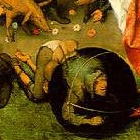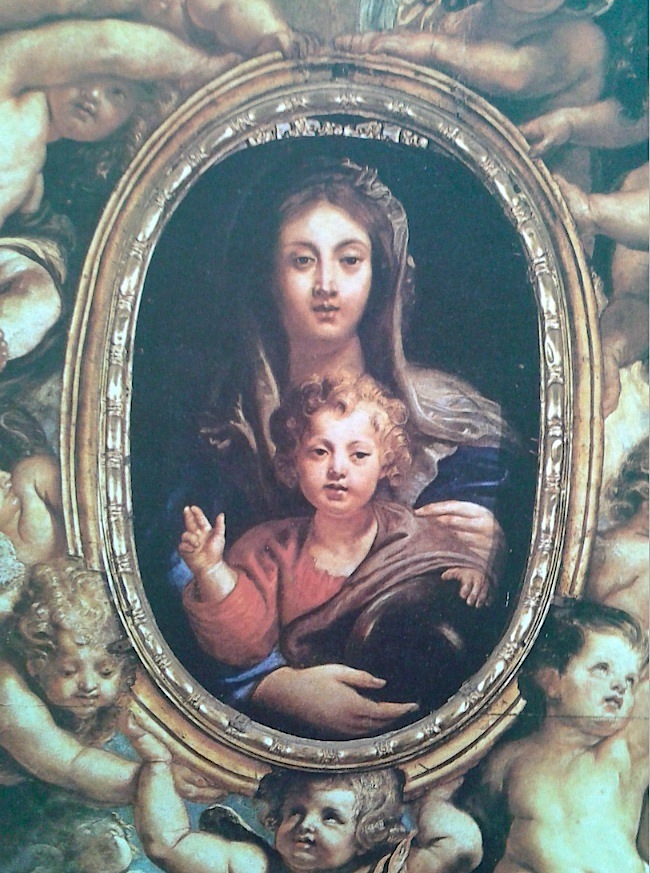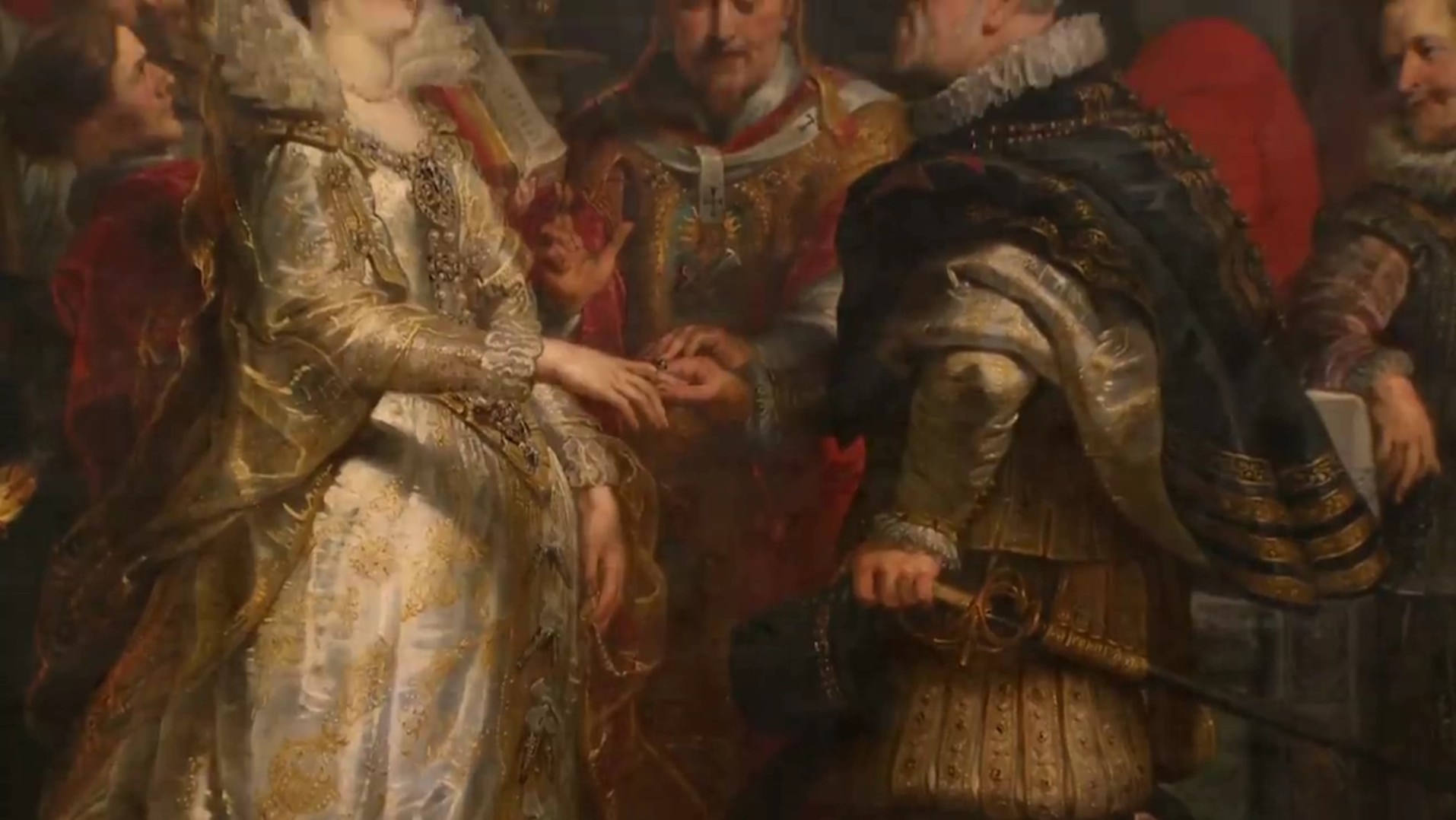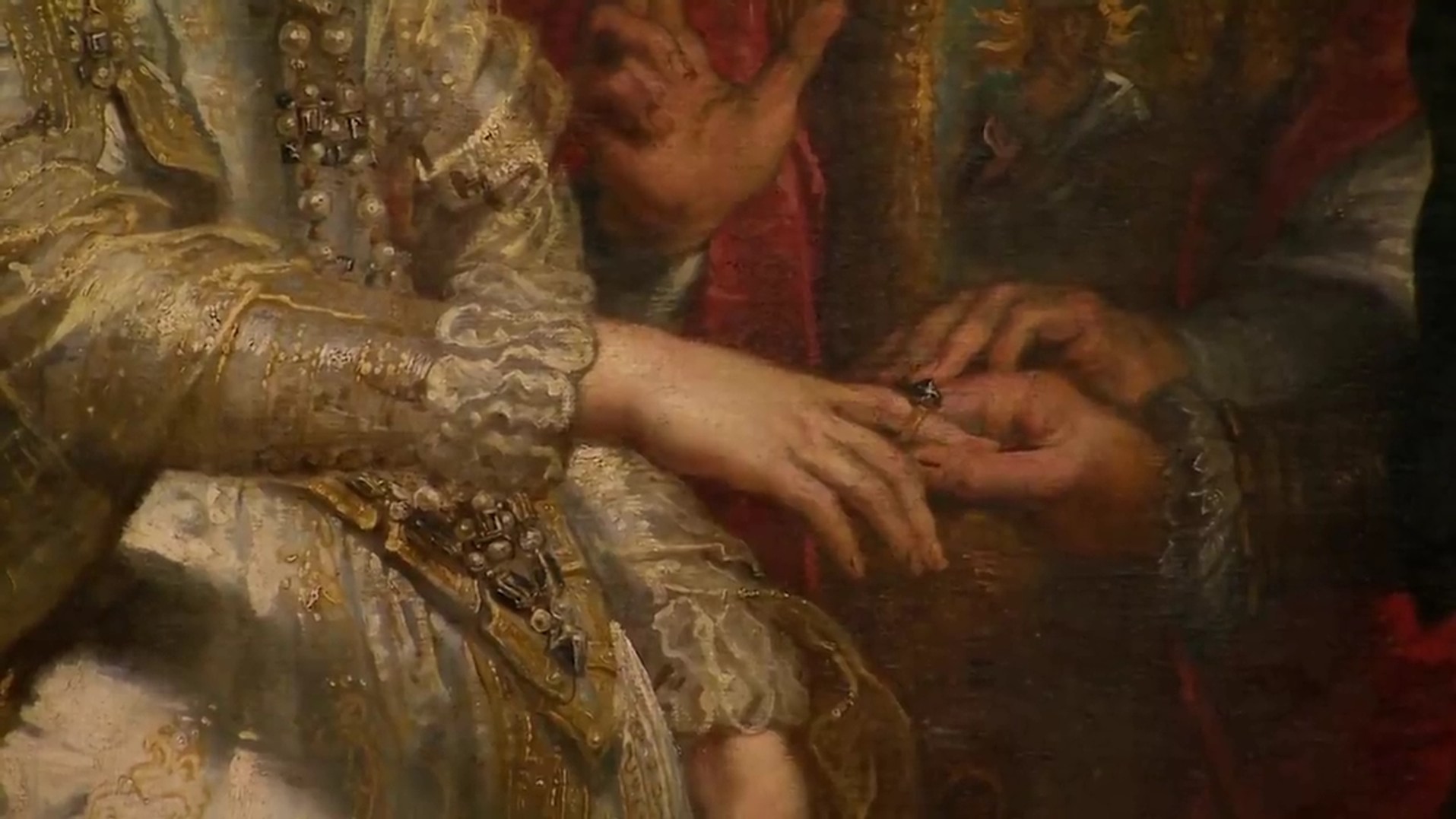M
I
C
R
O
S
T
O
R
Y
O
F
A
R
T
........................................................

NOW COMPLETED:

........................................................
MICROSTORY OF ART
ONLINE JOURNAL FOR ART, CONNOISSEURSHIP
AND CULTURAL JOURNALISM
........................................................
INDEX | PINBOARD | MICROSTORIES |
FEATURES | SPECIAL EDITIONS |
HISTORY AND THEORY OF ATTRIBUTION |
ETHNOGRAPHY OF CONNOISSEURSHIP |
SEARCH

........................................................



 >MICROSTORIES
>MICROSTORIES
- Richard Serra
- Martin Scorsese
- Claude Simon
- Sunshine
- Werner Herzog
- The Creation
- Marcel Duchamp
- Nino Rota
- Wölfflin and Woolf
- Hansjörg Schneider
- Kraftort Arkadien
- Visual Biography
- Schlaraffenleben
- Die Geisteswissenschaften
- The Voyeur
- Buzzword Sustainability
- Paul Verlaine
- Tao Yuanming
- New Beginning
- Seneca
- Still Lifes
- Charles Baudelaire
- Frédéric Chopin
- The Art History of Sustainability
- Wang Wei
- Solarpunk
- Historians of Light
- Lepanto
- Renaturalization
- Plates
- Snow in Provence
- Learning to See
- Picasso Dictionaries
- Peach Blossom Spring
- Picasso Tourism
- Tipping Points
- Sviatoslav Richter
- Weather Reports
- Treasure Hunt
- Another Snowscape in Picasso
- Picasso in 2023
- Dragon Veins
- The Gloomy Day
- The Art of the Pentimento
- Reforestation
- The Status of Painting
- Emergency Supply
- Punctuality
- Watching Traffic
- Zhong Kui
- How Painting Survived the 1990s
- Confirmation Bias
- Sustainability and Luxury
- Garage Bands
- Picasso and Artificial Intelligence
- Eyes of Tomorrow
- Picasso in 2023 2
- Gluing Oneself to Something
- Suburbia
- Bamboo
- Sustainability and Carpe Diem 1
- Interviews with Bruegel
- Sustainability and Carpe Diem 2
- Coffee & Sugar
- Bamboo 2
- Picasso in 2023 3
- Sustainability and Carpe Diem 3
- Cherry Orchard
- Old Magazines
- Chance
- Nick Drake
- Harlequin
- The Smartphone & the Art Book
- Atlas Syndrome
- The Kitchen
- Atlas Syndrome 2
- Consideration
- Tori Amos
- School
- Orchard Auctioning Day
- The Hundred Years’ War
- Sócrates
- Chameleon
- Nefertiti Bust
- Picasso as a Computer
- Sunflowers
- Philemon & Baucis
- Ode to the Radio
- Childhood
- Wimmelbild
- Restitution
- Nick Drake 2
- Wishful Thinking
- Sundays
- The Independent Scholar
- September
- The Fisherman by Pirosmani
- Microadventure
- Sociology
- Salvator Mundi
- Chillon
- Appassionata
- Amber
- Homer
- Berlin
- Planet Walk
- Improvisation
- Seeing Picasso
- These Nice Kids
- Robber
- The One
- The Sea Turtle
- Zoo
- Through the Hush
- Wunderkammer
- I Do Not Seek, I Find
- Shopping Mall
- Food Hamper
- The Secretary
- This Gate
- Nor Rainy Day
- House on a Hill
- Beautiful Island
- Second-hand Bookstore
- Flat
- Slap in the Face
- Serra, Wenkenpark
- Apologies
- The Bells
- Nordmann Fir
- Picasso Wanting To Be Poor
- Picasso, Pirosmani
- A Brief History of Sculpture
- 24 Sunsets
- Rusty Phoenix
- Glove
- Wintry Stanza
- A Song
- Like A Beatle
- Catching An Orange
- Solar Bees
- Permaculture

 >FEATURES
>FEATURES
- Van Gogh On Connoisseurship
- Two Museum’s Men
- Ende Pintrix and the City in Flames
- Titian, Leonardo and the Blue Hour
- The Man with the Golden Helmet: a documentation
- Un Jury d’admission à l’expertise
- Learning to See in Hitler’s Munich
- Leonardo da Vinci and Switzerland
- The Blue Hour Continued
- The Blue Hour in Louis Malle
- Kafka in the Blue Hour
- Blue Matisse
- Blue Hours of Hamburg and LA
- A Brief History of the Cranberry
- The Other Liberale in the House
- The Blue Hour in Raphael
- Who Did Invent the Blue Hour?
- Monet on Sustainability
- Velázquez and Sustainability
- The Blue Hour in Guillaume Apollinaire
- Van Gogh on Sustainability
- The Blue Hour in Marcel Proust
- Picasso and Sustainability
- The Contemporary Blue Hour
- The Blue Hour in 1492
- The Blue Hour in Hopper and Rothko
- Hopper and Sustainability
- The Blue Hour in Ecotopia
- The Hour Blue in Joan Mitchell
- Explaining the Twilight
- The Twilight of Thaw
- The Blue Hour in Pierre Bonnard
- Explaining the Twilight 2
- Picasso on Stalin
- Rubens on Sustainability
- The Salvator Mundi in Bruegel and Rubens
- The Blue Hour in Leonardo da Vinci and Poussin
- The Blue Hour in Rimbaud
- Faking the Dawn
- Frost and Thaw in Ilya Ehrenburg
- Picasso, Stalin, Beria
- Picasso, Solzhenitsyn and the Gulag
- Shostakovich on Picasso
- Hélène Parmelin in 1956
- Historians of Picasso Blue
- Picasso Travelling to Moscow 1
- The Blue Hour in Caravaggio
- Picasso Travelling to Moscow 2
- Picasso, the Knife Game and the Unsettling in Art
- Some Notes on Leonardo da Vinci and Slavery
- Picasso Moving to the Swiss Goldcoast
- The Blue Hour in Camus
- The Blue Hour in Symbolism and Surrealism
- Caspar David Friedrich in His Element
- Exhibiting the Northern Light
- Caspar David Friedrich in His Element 2
- Robert Schumann and the History of the Nocturne
- The Blue Hour in Robert Schumann
- Caspar David Friedrich and Sustainability
- The Twilight of Thaw 2
- Multicultural Twilight
- The Blue Hour in Anton Chekhov
- The Blue Hour in Medieval Art
- Twilight Photography
- The Blue Hour in Bob Dylan
- Iconography of Optimism

 >SPECIAL EDITIONS
>SPECIAL EDITIONS
- Visions of Cosmopolis
- Mona Lisa Landscapes
- Turner and Ruskin at Rheinfelden
- Painters On TV & On TV
- Spazzacamini in Art
- A Last Glance at Le Jardin de Daubigny
- The Experimental Cicerone
- A Dictionary of Imaginary Art Historical Works
- Iconography of Blogging
- Begegnung auf dem Münsterplatz
- Cecom
- Das Projekt Visual Apprenticeship
- Those Who See More
- A Fox on Seeing with the Heart
- Sammlung Werner Weisbach
- Daubigny Revisited
- Some Salvator Mundi Microstories
- Some Salvator Mundi Afterthougths
- Some Salvator Mundi Variations
- Some Salvator Mundi Revisions
- A Salvator Mundi Questionnaire
- A Salvator Mundi Puzzle
- Unknown Melzi
- Francis I and the Crown of Charlemagne
- From Amboise to Fontainebleau
- Drones Above Chambord
- Looking Back At Conques
- Flaubert At Fontainebleau
- Images of Imperial Ideology
- The Chronicles of Santa Maria delle Grazie
- Seeing Right Through Someone
- Melzi the Secretary
- Eying Glass
- A Foil to the Mona Lisa
- A Renaissance of the Cartoon
- Sketching a Family Tree
- Venetian Variations
- A Brief History of Digital Restoring
- A Consortium of Painters
- Leonardeschi and Landscape
- A Christ in Profile
- Learning to See in Spanish Milan
- A History of Gestures
- Leonardo and Josquin
- A Renaissance of the Hybrid
- Suida and Heydenreich
- The Watershed
- Three Veils
- From Beginning to End
- Connoisseurship of AI
- Twilight and Enlightenment
- The Blue Hour in Chinese Painting
- Dusk and Dawn at La Californie
- Iconography of Sustainability
- The Blue Hour in Goethe and Stendhal
- The Sky in Verlaine
- The Blue Hour in Paul Klee
- Iconography of Sustainability 2
- The Blue Hour in Charles Baudelaire
- From Bruegel to Solarpunk
- Some Salvator Mundi Documentaries
- Some More Salvator Mundi Monkey Business
- The Windsor Sleeve
- Brigitte Bardot’s Encounter with Picasso
- Art Historians and Historians
- A Salvator Mundi Chronicle
- The Salvator Mundi and the French Revolution
- The Fontainebleau Group
- The Encounter of Harry Truman with Pablo Picasso
- The Fontainebleau Group Continued
- The Windsor Sleeve Continued
- The Salvator Mundi in Early Netherlandish Painting 1
- Some Salvator Mundi Resources
- A New Salvator Mundi Questionnaire
- The Woman in Picasso
- The Yarborough Group
- Melzi, Figino and the Mona Lisa
- The Yarborough Group Continued
- A Salvator Mundi Global History
- The Salvator Mundi in Medieval Art
- The Salvator Mundi in Medieval Art 2
- The Salvator Mundi in Early Netherlandish Painting 2


 >HISTORY AND THEORY OF ATTRIBUTION
>HISTORY AND THEORY OF ATTRIBUTION
- The Mysterious »Donna Laura Minghetti-Leonardo«
- Assorted Demons of Connoisseurship
- Panofsky Meets Morelli
- Discovering the Eye of Sherlock Holmes
- Handling the Left-handed Hatchings Argument
- Visual History of Connoisseurship
- Alexander Perrig
- Connoisseurship in 2666
- What Postmodernity Has Done to Connoisseurship
- Dividing Four Fab Hands
- A Leonardesque Ambassador
- Test Cases in Connoisseurship
- A Raphael Expertise
- How to Tell Titian from Giorgione
- Louise Richter
- The Unique Property in the History of Connoisseurship
- An Expertise by Berenson
- The Book of Expertises
- An Album of Expertises
- An Expertise by Friedländer
- A Salvator Mundi Provenance
- How to Tell Leonardo from Luini
- An Expertise by Crowe and Cavalcaselle
- An Expertise by Bayersdorfer
- An Expertise by Hermann Voss
- An Expertise by Hofstede de Groot
- Leonardeschi Gold Rush
- An Unknown »Vermeer«
- An Expertise by Roberto Longhi
- An Expertise by Federico Zeri
- A Salvator Mundi Geography
- A Salvator Mundi Atlas
- The Bias of Superficiality
- 32 Ways of Looking at a Puzzle
- James Cahill versus Zhang Daqian
- Five Fallacies in Attribution
- On Why Art History Cannot Be Outsourced to Art Dealers
- On Why Artificial Intelligence Has No Place in Connoisseurship
- Salvator Mundi Scholarship in 2016
- Leonardo da Vinci at the Courts
- The Story of the Lost Axe
- The Last Bruegel
- A Titian Questionnaire
- On Where and Why the Salvator Mundi Authentication Did Fail
- The Problem of Deattribution

 >ETHNOGRAPHY OF CONNOISSEURSHIP
>ETHNOGRAPHY OF CONNOISSEURSHIP
MICROSTORY OF ART
ONLINE JOURNAL FOR ART, CONNOISSEURSHIP
AND CULTURAL JOURNALISM
........................................................

***
ARCHIVE AND FURTHER PROJECTS

1) PRINT


***
2) E-PRODUCTIONS


........................................................

........................................................

........................................................
FORTHCOMING:


***
3) VARIA

........................................................

........................................................

........................................................

........................................................

........................................................
***
THE GIOVANNI MORELLI MONOGRAPH

- The Giovanni Morelli Monograph
........................................................
MICROSTORY OF ART
ONLINE JOURNAL FOR ART, CONNOISSEURSHIP AND CULTURAL JOURNALISM
HOME
The Salvator Mundi in Bruegel and Rubens

(11.11.2022) Both Pieter Bruegel and Pieter Paul Rubens show to be particularly inventive with the Salvator Mundi iconography (a blessing Christ, holding a globe), and in both cases it is about pictures within pictures. But while in the one case, we might be invited at looking closely, we might not be so sure, if, in the other case, it is about a general invitation, or rather about an somewhat exclusive one (which implies the exclusion of some), or about invitation at all. At any rate, if being invited or not, we do not abstain from looking here.


Pieter Bruegel is certainly not getting at overwhelming us, although his picture – The Netherlandish Proverbs – does seem to be a demanding one at first. Because what Bruegel is getting at, would simply loose its sense, it would be undermined, if we would step away from his picture, due to exhaustion from being overwhelmed. This is about popular wisdom here, the popular knowledge of people – people, not exclusive elites –, a knowledge that shows in language, proverbs, and it is about collecting, assembling this knowledge, and about ways to visualize, the whole wisdom of people, in one picture. That has to be closely inspected, with this inspection, probably, never coming to an end. Because also the viewer is bringing something to this gathering: his ideas, his wisdom, his awareness of language (and pictures), and perhaps also his particular interest.
Like for example an interest in what Pieter Bruegel does as to Salvator Mundi iconography. After we might have noticed before that Bruegel seems to have also a particular joy to play with the globus cruciger, with many globi cruciger, in his pictures. And what Bruegel does as to the Salvator Mundi iconography is actually quite unique.

Yes, it is about the beard here, a flaxen beard. And the proverb depicted seems to say ›To tie a flaxen beard to the face of Christ‹, which means ›To hide deceit under a veneer of Christian piety‹. The picture, thus, shows something people do, as well, and at the same time, as it shows a knowledge of people – of what people usually do (because otherwise they would not have such proverb). As well as the knowledge that people, actually, should not do – what they, still, do all the time.
Brief: this detail from one of Bruegel’s great pictures only – it shows also of what art is capable of: of contemplating of what people do, although they have a sense of conventions, norms and rules as to what they should not do. And in a certain sense Bruegel shows such awareness of social rules and practices also on another level, because also iconography has its conventions, perhaps rules. The Salvator Mundi, here, seems to function as a sort of theatrical requisit, and certainly not as a picture of a blessing Christ that even could be confused with Christ or a priest actually giving a blessing. The picture, as one could say, is looking at someone who cheats with religion, and covers his deceit ›under a veneer of Christian piety‹, while the picture, itself, acts very freely with – it liberates itself from the conventions of Christian iconography. The picture seems to be looking at Christian iconography (and at how it is being used), and one may ask: from what point of view? Certainly from the point of view of an artist who seems to be a free thinker, but probably also from the point of view of someone very attentive as to how Christian iconography is being used by his fellow men, also by fellow-artists, as one may add, to cover what people usually do ›under a veneer of Christian piety‹. Christian iconography, thus, is (or potentially can function), as Bruegel seems to say, as this very veneer. But, and this is a small triumph of art, it can also be used to show that it is thus being used.

(Picture: photo taken by me after reproduction in Keith Roberts, ed., Rubens, Chefs d’oeuvres en grand format series)
Does also Pieter Paul Rubens show a critical sense as to Christian iconography? We will see. At any rate Rubens shows to be as inventive as Bruegel. But it is not that easy to find these pictures (within pictures) that actually show of Rubens was capable of, beyond his abilities to overwhelm his viewers. In his Ecstasy of St. Gregory the Great Rubens of 1608 has inserted a picture that – most elegantly – fusions the iconography of a Madonna and Child with the Salvator Mundi iconography. The globe – on some level a toy – is kept by one hand of the mother and one of the child. And although also this picture (within another picture) seems to be of extraordinary inventiveness, it is not that easy to spot it – a) in the picture, but b) also among reproductions of Rubens pictures. And this picture I am showing here, is shown here, because I actually and accidentally do own a copy of a book on Rubens en grand format. It includes a detail from a study for the painting, of which, I myself, have photographed again a part: the Madonna and Child, which, at the same time, includes, in a most beautiful fusion, a Salvator Mundi. And the blue/red combination that usually – not always – can be found in the garment of Christ, if Christ as a Salvator Mundi is shown alone, here, is the result of two garments shown in this one picture, one being blue, one being red.

This example of what Rubens was capable en petit format (as one could say), now is to be confronted with one example of grand scale: The cycle of pictures dedicated to the life (and social status) of Maria de’ Medici shows a Rubens in the service of political pictorial rhetoric – and Christian iconography (as Bruegel would perhaps have observed) shows here in the service of political rhetoric, if not to say propaganda. The apotheosis of Maria de’ Medici, whose standing in France was somewhat precarious (to say the least), shows Rubens, willingly, doing a representation of a political figure, as this figure herself wanted to be seen – not by people in general perhaps, but rather by those elites coming to her palace. Are we invited to look at details here?
I am not so sure, but it is worth to look at details here as well. At the jewellery perhaps, but also at the one Salvator Mundi (if it is a Christ, holding a globe, because a globe can hardly be seen), which, here, rather is being hidden than exposed. It shows in the habit of the priest at the wedding by proxy of Maria de’ Medici and (absent) Henry IV.
An interesting detail within the detail is blessing gesture here. Doubled by the priest is the gesture of Christ, but the interesting observation that one can make here, is that the Christ in the habit uses the open-hand-blessing-gesture, while the priest in the scene uses another one: the benedictio latina, with only three fingers being stretched.
I am focussing here at details in one picture from a grand cycle of pictures. But again, en petit format Rubens is of enormous inventiveness and, if one does like so, finesse. In that he is not only capable of showing religious institutions (a wedding ceremony), but also the theatre of hands and gestures following precise rules, required by these institutions; and while he does that, he does show an remarkable awareness of alternatives. Because the blessing gesture, as I have shown in my Salvator Mundi book, does have a history. At the times of Rubens it was rather the open-hand-gesture which was required by the Catholic Church. And one may wonder, if the priest, here, was acting according to what was required, or what exactly was the reason of Rubens showing the one gesture (in the habit) as well as the other (in the ›real‹ scene, depicted, in this representation). Did Rubens do this just for himself, perhaps inserting his personal awareness of the actual convention into a picture that was meant rather to be an apotheosis, a picture that, on some level, preferred the theatrical effect to actual religious correctness? If it was that, Rubens showed, in the detail, a critical awareness of the function of Christian iconography, in that he doubled the blessing gesture, a critical awareness, as one has to conclude, even somewhat similar to that of Pieter Bruegel. Because theatricality, here, the theatre of bejewelled hands is the veneer of something that rather was meant as a political statement, in that the whole Medici cycle was meant to represent the status of Maria de’ Medici in an idealized, impressive and overwhelming way. With ›overwhelming‹ meaning: there was no other way, and no other way was to be discussed. In its details the painting I am focussing at here, does show also the alternative spirit: there are always other ways, and Rubens was capable to show this with details ›within the detail‹.
Which leads us to the question of how such details can be found and seen at all. And the short answer is here: I have taken two picture from Waldemar Januszczak’s beautiful, and deservedly popular documentary on Rubens (which can be found on Youtube). A documentary which knows (and also says so) that one has to follow Rubens with a camera, if one does want to know what Rubens was capable of. And Januszczak was doing that most convincingly. And this is why two pictures of details can be seen here, pictures that show to be a bit cinematic for two reasons: because they were, originally, taken by a film camera. But probably also: because Rubens was cinematic. Showing a sense for the grand scale. But, as can be seen here, also for the detail that requires a more reflective viewer. Someone not willing to be overwhelmed. At least not all the time.

(Picture: taken from Waldemar Januszczak’s Rubens documentary; youtube.com)

(Picture: taken from Waldemar Januszczak’s Rubens documentary; youtube.com)

MICROSTORY OF ART
ONLINE JOURNAL FOR ART, CONNOISSEURSHIP AND CULTURAL JOURNALISM
HOME
© DS